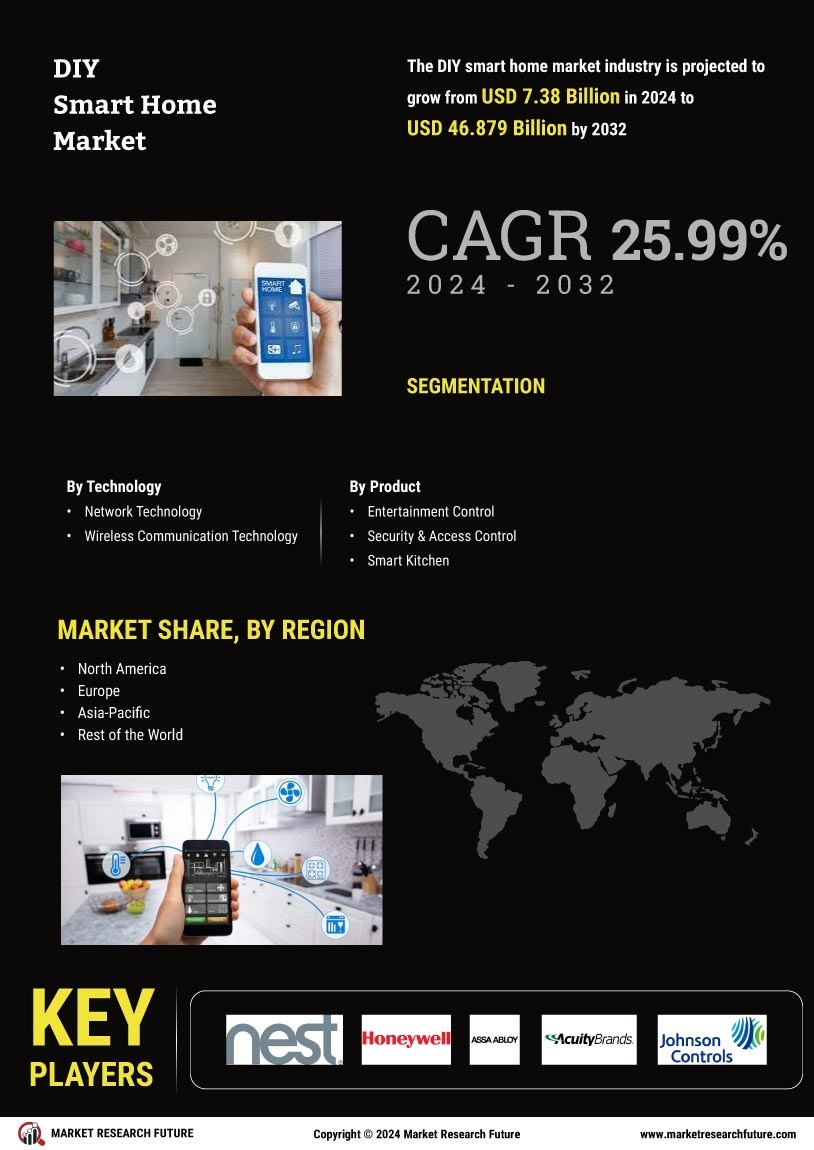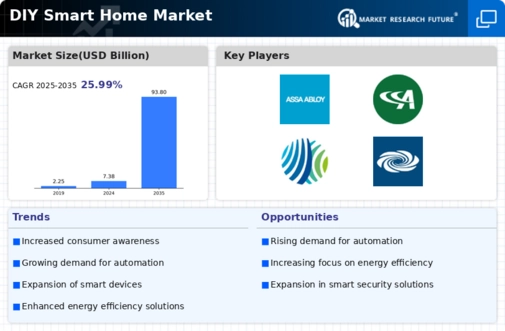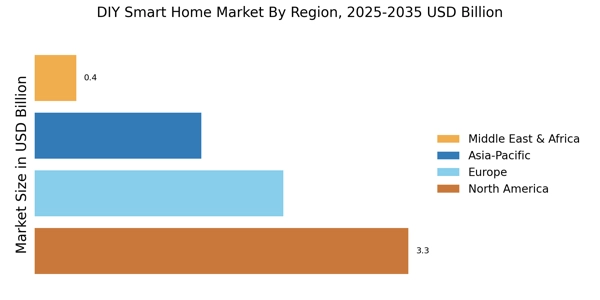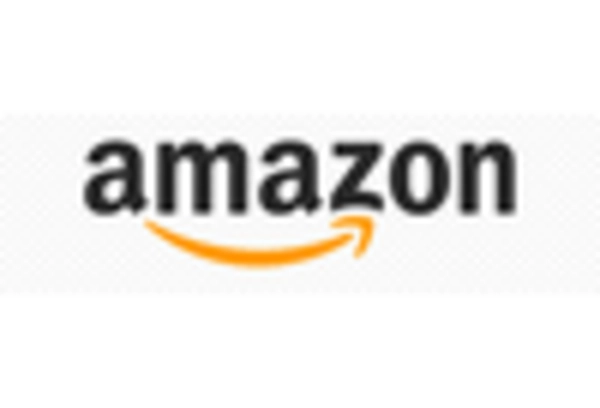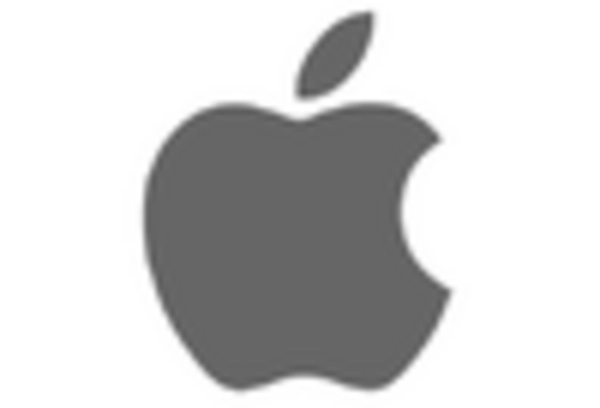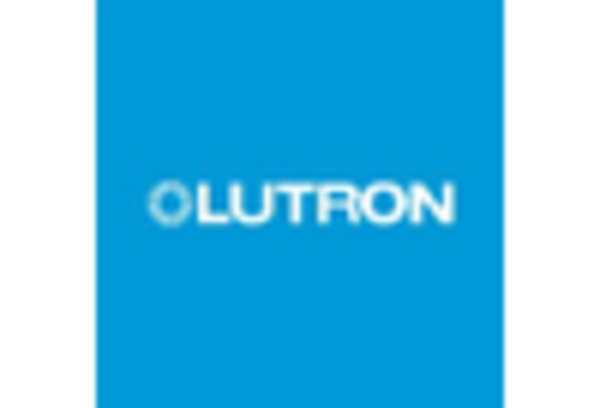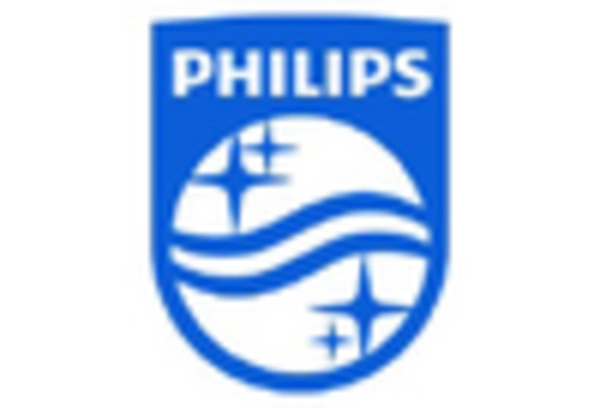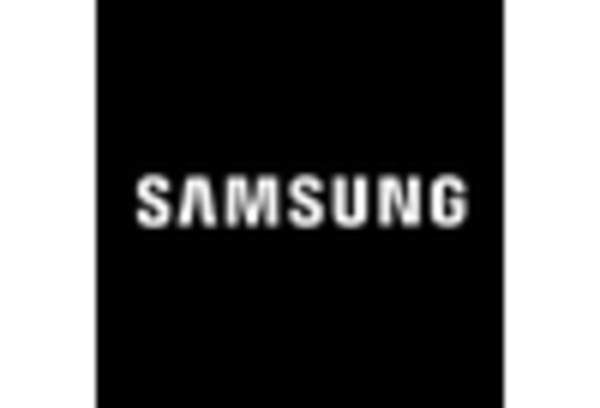Advancements in Smart Technology
Technological advancements play a pivotal role in shaping the DIY Smart Home Market. Innovations in smart devices, such as improved connectivity and enhanced user interfaces, facilitate seamless integration into everyday life. The proliferation of Internet of Things (IoT) devices has led to a significant increase in the number of smart home products available to consumers. Data indicates that the market for smart home devices is projected to reach USD 174 billion by 2025, underscoring the rapid growth and adoption of these technologies. As manufacturers continue to invest in research and development, the DIY Smart Home Market is expected to benefit from a wider array of user-friendly products that empower consumers to create customized smart home ecosystems.
Growing Awareness of Home Security Concerns
Concerns regarding home security are increasingly influencing consumer behavior within the DIY Smart Home Market. As crime rates fluctuate and homeowners seek peace of mind, the demand for smart security solutions is on the rise. Products such as smart cameras, doorbell cameras, and motion sensors are becoming essential components of modern home security systems. Recent surveys indicate that nearly 60% of homeowners prioritize security features when considering smart home devices. This heightened awareness of security needs is likely to drive innovation and product development within the DIY Smart Home Market, as companies strive to offer comprehensive solutions that address the evolving concerns of consumers.
Growing Consumer Interest in Home Automation
The DIY Smart Home Market experiences a notable surge in consumer interest as individuals increasingly seek to enhance their living environments through automation. This trend is driven by the desire for convenience, security, and energy efficiency. According to recent data, approximately 70% of homeowners express a preference for smart home devices that can be easily installed without professional assistance. This growing inclination towards self-installation reflects a shift in consumer behavior, where individuals prioritize personalized solutions that align with their specific needs. As a result, the DIY Smart Home Market is likely to witness a continuous influx of innovative products designed for easy integration into existing home systems, catering to the evolving preferences of tech-savvy consumers.
Rising Demand for Energy Management Solutions
The emphasis on energy management is becoming increasingly pronounced within the DIY Smart Home Market. Consumers are more aware of their energy consumption patterns and are actively seeking solutions to reduce costs and environmental impact. Smart thermostats, energy-efficient lighting, and automated energy management systems are gaining traction as homeowners look for ways to optimize their energy usage. Recent statistics suggest that energy management solutions can lead to savings of up to 30% on energy bills. This growing demand for energy-efficient products is likely to drive innovation and competition within the DIY Smart Home Market, as companies strive to offer solutions that not only enhance convenience but also promote sustainability.
Increased Availability of Affordable Smart Devices
The DIY Smart Home Market is witnessing a significant increase in the availability of affordable smart devices, making home automation accessible to a broader audience. As technology advances and production costs decrease, manufacturers are introducing a range of budget-friendly options that do not compromise on quality or functionality. This democratization of smart home technology is likely to attract a diverse consumer base, including those who may have previously considered such devices to be prohibitively expensive. Market data indicates that the average price of smart home devices has decreased by approximately 20% over the past few years, further encouraging adoption. Consequently, the DIY Smart Home Market is poised for growth as more consumers embrace the benefits of smart technology.
